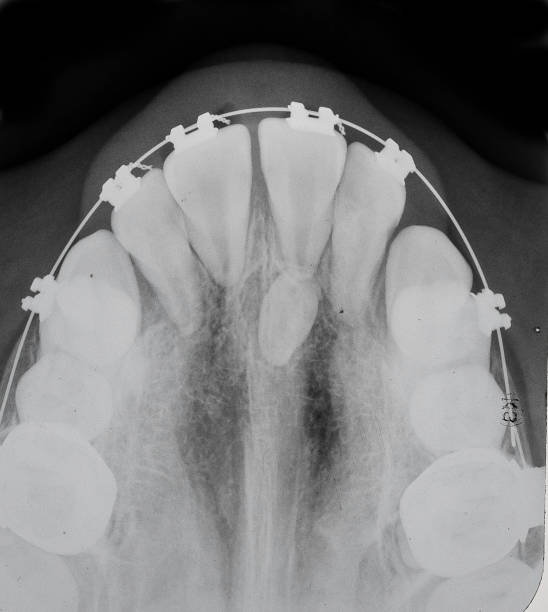Hyperdontia is a condition in which a person has more teeth than the usual 32. These extra teeth, called supernumerary teeth, can vary in shape and size and can erupt anywhere in the mouth. While hyperdontia is not always painful, it can lead to complications such as crowding, impaction, and cysts.
Types of Hyperdontia
Supernumerary teeth can be classified according to their shape and location:
-
Supplemental: These teeth resemble normal teeth in shape and anatomy.
-
Rudimentary: These teeth have an abnormal shape and are often smaller than normal teeth. They may be peg-shaped, tuberculate (barrel-shaped), or conical (with a narrow top).
-
Odontoma: This is a benign tumor composed of dental tissue. It may be compound (made up of small tooth-like structures) or complex (a mass of tissue that does not resemble a tooth).
-
Mesiodens: This is an extra tooth that grows between the two central incisors in the upper jaw.
-
Distomolar: This refers to an extra tooth growing behind the molars.
-
Paramolar: This is an extra tooth that grows next to one of the molars.
Causes
The exact cause of hyperdontia is unknown, but it is often associated with genetic factors. Certain genetic disorders, such as Gardner’s syndrome, cleidocranial dysplasia, and Ellis-van Creveld syndrome, can increase the risk of developing supernumerary teeth. In other cases, hyperdontia may occur as a random event.
Symptoms
In many cases, hyperdontia does not cause any noticeable symptoms. The extra teeth may remain hidden beneath the gums and cause no problems. However, in some cases, individuals with hyperdontia may experience:
- Pain or swelling in the gums
- Difficulty chewing or biting
- Crowded or misaligned teeth
- Delayed eruption of permanent teeth
- Formation of cysts
Diagnosis and Treatment of Hyperdontia
Hyperdontia is diagnosed through a dental examination and X-rays. X-rays can reveal the presence of supernumerary teeth, even if they have not yet erupted.
The treatment for hyperdontia depends on the location, number, and growth of the extra teeth. In many cases, it is necessary to remove the supernumerary teeth to prevent complications such as crowding, impaction, and cysts.
Complications of Hyperdontia
If left untreated, hyperdontia can lead to several complications, including:
- Crowded teeth, which can make it difficult to clean and can increase the risk of tooth decay and gum disease
- Impacted teeth, which can damage nearby teeth and roots
- Cysts, which are fluid-filled sacs that can damage bone and tissue
- Delayed eruption of permanent teeth
- Difficulty chewing or biting
When to See a Dentist
If you suspect you have hyperdontia or notice any symptoms associated with this condition, it is important to see a dentist. Early diagnosis and treatment can prevent complications and ensure a healthy and functional smile.
In conclusion, hyperdontia is a condition that requires attention and evaluation from a dentist. While in many cases no treatment is necessary, in other cases removal of the supernumerary teeth is crucial to prevent future dental problems.







